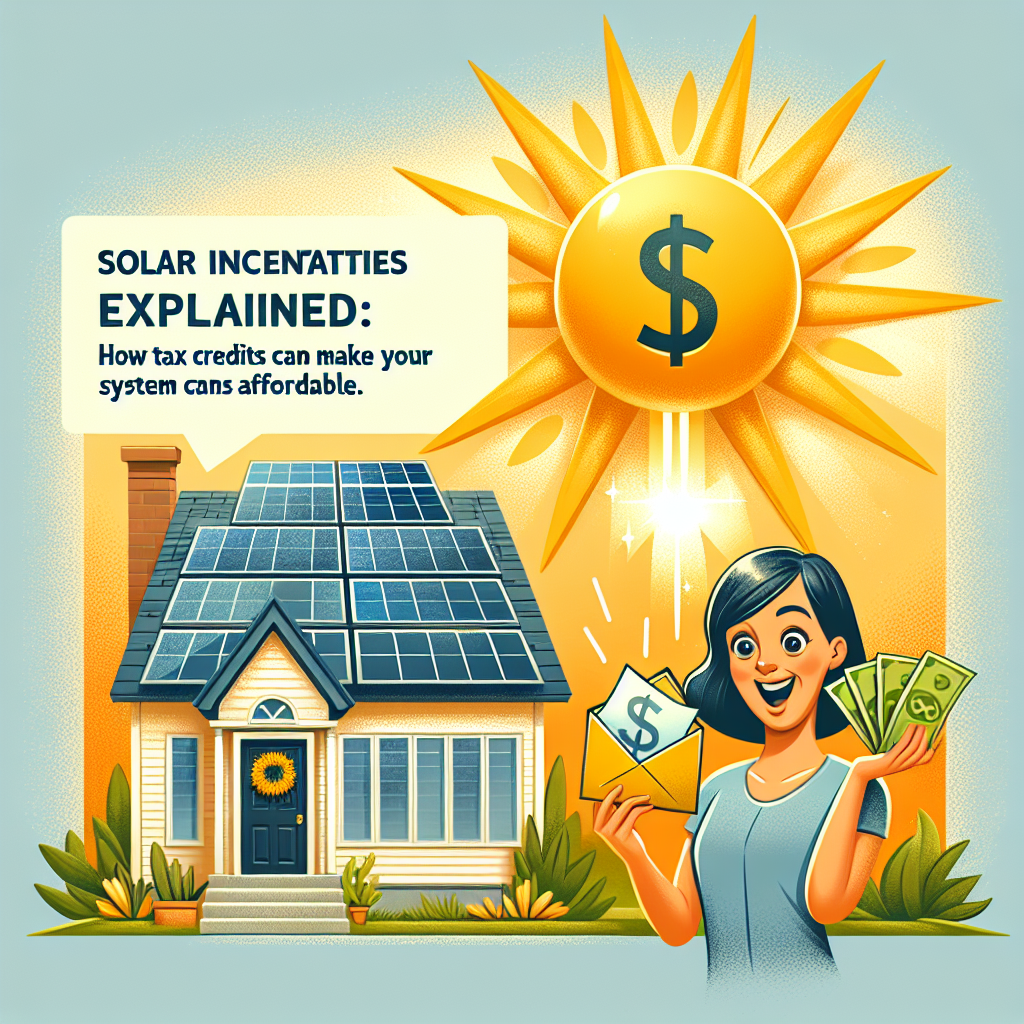As the world shifts towards sustainable energy sources, more homeowners than ever are considering solar power. While the initial investment can be intimidating, understanding solar incentives, particularly tax credits, can significantly ease the financial burden. In this article, we’ll break down the benefits of solar incentives, explain how tax credits work, and explore specific programs that can make your solar system more affordable.
The Rising Popularity of Solar Energy
Solar energy has emerged as a credible alternative to traditional energy sources, offering numerous environmental benefits and long-term savings. In fact, according to the Solar Energy Industries Association, the U.S. solar market has been growing at an impressive pace, with residential installations increasing by over 40% year-on-year in recent years. This surge in adoption is bolstered by various federal and state solar incentives that help homeowners make the switch without breaking the bank.
Understanding Solar Tax Credits
What Are Solar Tax Credits?
Solar tax credits are financial incentives provided by the government to encourage the adoption of solar energy. These credits allow homeowners to deduct a percentage of their solar installation costs from their federal taxes, effectively reducing the overall cost of the solar system. The most prominent of these is the Federal Investment Tax Credit (ITC).
Federal Investment Tax Credit (ITC)
Since its inception, the ITC has played a crucial role in promoting solar energy. As of 2023, homeowners can claim a 26% tax credit on their system’s total installation cost. This means that if your solar installation costs $20,000, you could receive a tax credit of $5,200. It’s important to note that the ITC is set to gradually decrease in the coming years, making it more advantageous to install solar sooner rather than later.
State-Specific Incentives
In addition to the federal tax credit, many states offer their own incentives. These can include income tax credits, sales tax exemptions, and rebates for solar installation. Here are a few examples:
California Solar Initiative
California offers substantial incentives through its California Solar Initiative, which provides cash rebates based on the amount of energy produced by your solar system. This initiative aims to promote solar energy deployment by reducing upfront costs for homeowners.
New York State Solar Tax Credit
New York offers a state tax credit equal to 25% of the cost of a solar energy system, up to a maximum of $5,000. With this generous incentive, New Yorkers can enjoy more affordable solar installations while contributing to the state’s clean energy goals.
How to Determine Eligibility for Solar Incentives
Your Location Matters
Eligibility for solar incentives often varies by state and even by local utility providers. Research your state’s specific solar programs and reach out to your local solar installer to discuss available incentives in your area.
Tax Liability Considerations
It is also essential to consider your tax liability when evaluating solar tax credits. If you owe less in taxes than the amount of your tax credit, you will not be able to utilize the entire credit in a single year. However, the good news is that any unused credits can often be rolled over to future tax years.
Making Solar More Affordable: Financing Options
While tax credits can significantly reduce the up-front costs of solar installation, various financing options are also available to make the transition smoother. Here are a few strategies to consider:
Solar Loans
Many financial institutions offer loans specifically designed for solar energy systems. These loans can cover not only the installation costs but also allow homeowners to pay them off over an extended period, making solar energy more manageable financially.
Leases and Power Purchase Agreements (PPAs)
If you prefer not to purchase your solar system outright, you can consider leasing or entering a Power Purchase Agreement (PPA). With these options, you typically pay a monthly fee to use the solar energy generated by the system installed on your roof, without the burden of ownership.
Take the Next Step
Switching to solar energy is an investment in your home, your community, and the environment. By taking advantage of solar incentives and tax credits, you can reduce the financial hurdle associated with solar installation, making it more accessible to a broader audience.
Conclusion
Investing in solar energy is not only beneficial for your finances but also crucial in combating climate change. With federal and state solar incentives like tax credits and rebates, you can make a huge difference in making renewable energy more affordable for yourself and future generations. As you navigate the various incentives, don’t hesitate to consult with a solar advisor to help guide you through the process. Your path to a more sustainable and economically sound future begins today!


